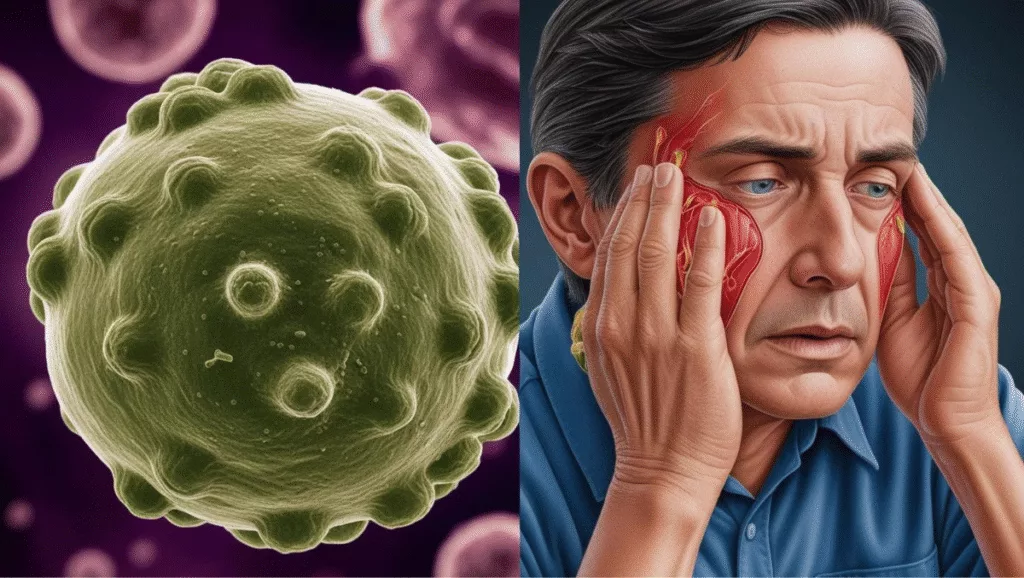Table of Contents

Biological emergencies are situations where living organisms or their toxic products pose severe threats to human health or even life. These emergencies aren’t just limited to diseases among people. They encompass everything from viruses and bacteria to toxins and other potentially harmful biological substances.
Understanding these emergencies is crucial today more than ever. The rapid pace of globalization, coupled with increasing human-animal interactions and technological advancements, has made the world more interconnected. While this connectivity offers numerous benefits, it also heightens the risk of biological emergencies spreading more swiftly and over greater distances.
Getting a grasp on the various threats is the first step in combating them. Some threats arise naturally, like pandemics and emerging diseases, and some are human-made like bioterrorism or accidental releases from labs. Each of these poses its own unique risks and challenges.
Having a robust grasp of the different types of biological threats and their potential impact is crucial for both public health planning and personal awareness. This knowledge not only helps in effective response strategies but also in empowering individuals to take preventive measures and cope more efficiently if such emergencies occur.
Types of Biological Emergencies

When we talk about biological emergencies, it’s important to look closely at the different types that can threaten societies. These emergencies can range from naturally occurring outbreaks to intentionally caused events with severe implications.
Pandemics stand out as one of the most notable types, such as the most recent outbreak of Covid-19. These are widespread occurrences of infectious diseases that aren’t contained geographically, rapidly impacting large numbers of people across the globe. Influenza pandemics are among the most common, illustrating the devastating potential of viral spread.
Emerging and high-consequence diseases present another critical category. These are illnesses that might be new or rare, often stemming from animal-to-human transmissions, known as zoonoses. With globalization, diseases like these can jump from secluded rural areas into urban centers much more quickly.
The threat of bioterrorism cannot be overlooked. This involves the deliberate release of viruses, bacteria, or other germs to cause illness or death in people, animals, or plants. Historical events have shown how such acts can induce public fear and societal disruption. Anthrax and smallpox are examples of agents that could be used in such contexts.
Food safety recalls highlight the dangers of contaminated food products. These recalls occur when widespread contamination, whether from a bacterium like E. coli or a toxin, causes illness. Comprehensive regulatory measures aim to prevent such outbreaks, but vigilance and quick action remain key to manage these events.
Accidental releases of pathogens might happen if harmful organisms escape from laboratories or other contained environments. Such incidents underscore the need for stringent safety protocols and continuous monitoring in places handling dangerous biological materials.
Recognizing the diversity of biological emergencies allows us to better prepare and mitigate these risks. Whether through personal safety habits or supporting broader public health initiatives, being informed helps build a resilient society capable of facing various biological threats.
Causes of Biological Emergencies
Biological emergencies can arise from a variety of causes, both natural and human-induced. Understanding these origins is vital for effective prevention and management.
Natural occurrences often lead to significant biological threats. Pandemics typically result from natural mutations in pathogens or the cross-species transmission of diseases. As humans come into closer contact with wildlife, the risk of zoonotic diseases, where pathogens jump from animals to humans, increases. These natural processes underscore the need for vigilant monitoring and rapid response systems.
Human actions are another crucial factor. The deliberate use of biological agents in acts of bioterrorism poses a serious threat. While rare, these incidents can have devastating impacts on public health and safety. Additionally, accidental releases of pathogens due to negligence or errors in handling biological materials highlight essential safety practices and the importance of stringent laboratory protocols.
Environmental changes also play a significant role. Climate change, for instance, alters ecosystems and wildlife patterns, creating new opportunities for pathogens to spread. Deforestation and urbanization further disrupt natural habitats, potentially accelerating the transmission of diseases to human populations.

Food and water contamination are frequent causes of biological emergencies. Unsafe handling, processing, or distribution of food can lead to outbreaks of foodborne illnesses. Similarly, the contamination of water supplies can foster the spread of waterborne diseases. Ensuring the integrity of these vital resources through regular testing and adherence to safety standards is crucial.
Airborne transmission of pathogens adds another layer of complexity to biological emergencies. Certain infectious agents, like those causing respiratory illnesses, can rapidly spread through the air, necessitating robust public health measures and individual protective practices to curb their impact.
Acknowledging these causes allows individuals and communities to better prepare for and respond to biological emergencies. Through informed action and collaborative efforts, it’s possible to mitigate these risks and enhance societal resilience.
Responding to Biological Emergencies
Facing biological emergencies requires a multifaceted approach that involves preparation, rapid response, and clear communication at all levels of society. This starts with solid planning efforts by governments and healthcare institutions designed to manage and mitigate these crises effectively.
Governmental preparedness involves setting up robust surveillance systems to detect threats early and react swiftly. These systems are crucial in mobilizing resources and directing healthcare responses efficiently. Thorough training of medical personnel and first responders ensures they are ready to act decisively when emergencies arise.
Public education and awareness campaigns play an essential role in reducing panic and misinformation. When communities are informed about potential threats and how to protect themselves, they are more likely to cooperate with official guidance and measures. This cooperation not only aids in containing outbreaks but also supports recovery efforts.
Technological advancements have significantly influenced how biological threats are detected and managed. Rapid diagnostic tools, data analytics, and mobile health technology improve the speed and accuracy of identifying and responding to outbreaks. Stay updated with new technologies to better understand and respond to threats in real-time.
Global cooperation and information exchange are vital, given the cross-border nature of many biological threats. Countries can benefit from shared experiences and collaborative efforts, such as coordinated vaccine distribution and joint research initiatives. In an interconnected world, international partnerships amplify the capacity to respond effectively.
The media has a critical function during biological emergencies. Effective communication strategies ensure the public receives timely, accurate information, fostering trust and compliance. Staying informed through reliable sources and understanding the media’s role can help you navigate the information landscape during a crisis.
Preventive Measures and Future Implications
Preventive measures are cornerstone actions that help limit the impact of biological emergencies. Investing in research and development, especially for vaccines and treatments, is one of the most effective ways to guard against future threats. These developments not only improve response times but also increase resilience against unforeseen pathogens.
Strict safety protocols in laboratories handling hazardous biological agents are essential in preventing accidental releases. Emphasizing the importance of maintaining stringent safety standards can significantly reduce the risk of such incidents, ensuring that biological threats remain contained within secure environments.
Looking ahead, the future of biological safety relies heavily on enhancing surveillance and monitoring systems. These mechanisms allow for the rapid detection of emerging threats, facilitating timely interventions. Governments and health organizations worldwide are focusing on upgrading their technological capabilities to keep pace with evolving challenges.
International partnerships and collaborative efforts further promote global health security. By working together, nations can share resources, knowledge, and innovative solutions, reinforcing each other’s defenses against biological threats. Supporting these global partnerships can help mitigate the risks posed by biological emergencies on a worldwide scale.
Community awareness through education and engagement remains a vital component of preventive strategies. Educating the public about personal hygiene practices and the importance of vaccinations can help build community resilience. Encouraging participation in public health initiatives empowers individuals to contribute to broader preventive efforts, ultimately reinforcing society’s overall preparedness and response capacity.

It is quite scary to see how easily these biological emergencies can happen and just how quickly they can get out of control. The medical fraternity and government really has to stay on their toes to keep ahead of any threats.
Was COVID considered a biological emergency? Suddenly everything was closed off and we had lockdown. I think that this is the worst one that I have experienced in my lifetime.
Hi Michel
Thank you for your insightful comment! You’re right; the rapid emergence of biological threats can indeed be alarming, and the Covid-19 Pandemic has highlighted just how quickly situations can escalate.
To answer your question, Covid-19 was classified as a Biological Emergency. The World Health Organization (WHO) declared it a Public Health Emergency of International Concern (PHEIC) on January 30,2020, and later, it was recognized as a pandemic on March 11th,2020. This classification was crucial as it prompted governments and health organizations worldwide to implement emergency measures, including lockdowns, to mitigate the spread of the virus.
The pandemic has been unprecedented in many ways, and it has certainly been one of the most significant biological emergencies in recent history. In my lifetime we have also had SARS, and Avian Influenza (coined “BIRD FLU”). It has underscored the importance of preparedness and the need for the medical community and governments to remain vigilant against emerging threats.
Your experience reflects the reality many have faced, and it’s a reminder of the ongoing need for robust public health systems and proactive measures to safeguard our communities.